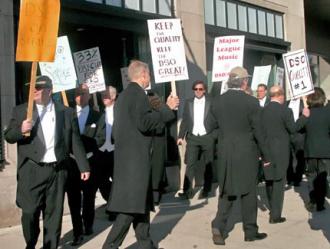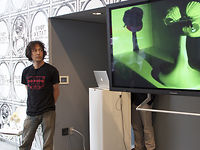
When they insist on white-tie-and-tails for men and black gowns for women, people who set dress codes for orchestras use arguments similar to those of educators who advocate for school uniforms.
Also, there’s a black-and-white uniformity to the look, which negates the individual and puts the focus on the corporate production of fine music.
In the 19th century, the (men) playing in the orchestra were dressed pretty much like the concert’s patrons. But what does the formality of this particular look say to a 21st century audience member in skinny jeans? Where else in daily, ordinary life do we see men dressed in tailcoats?
I liked the Toronto Symphony Orchestra’s casual-concert partnership with Banana Republic a few seasons ago, which saw the players dress in khakis. They played just as well, but the look of the sound came across as more friendly and approachable.
Music director Peter Oundjian gets it. He conducts in a Rosemarie Umetsu-designed black outfit that, aside from some more purely visual features, gives the maestro extra fabric in which to freely move his arms and shoulders.
Meanwhile, the violins and violas have to keep straining against their tailored tailcoats.
I wonder how much longer this is going to last. For example, New York City classical radio station WQXR reported yesterday on an ongoing experiment at the Baltimore Symphony, led by music director Marin Alsop, that is attempting to make a modern orchestra look modern as well.
You can read all about it here. And this is a video summarizing this intriguing collaboration with local fashion design students:
What do you think?
John Terauds
